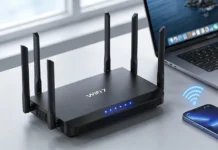According to a new research report by Berg Insight, the installed base of small cell cellular base stations increased to about 2.2 million units in 2011. Growing at a compound annual growth rate (CAGR) of 44.8 percent, the installed base is forecasted to reach 14 million units in 2016.
Small cells encompass a range of low power cellular base stations including femtocells, picocells and microcells with gradually higher output power and capacity in terms of simultaneous users. Small cells are designed to complement the base stations forming the cellular macro network by providing enhancements in coverage and capacity in locations such as homes, offices and public venues.
Mobile operators are experiencing fast growth in mobile data and signalling traffic as customers increasingly use mobile computing devices. Adoption of smartphones is rising and more subscribers use multiple connected devices such as PCs and tablets. “Total mobile data traffic in cellular networks have more than doubled every year since 2007 and is forecasted to grow at a compound annual growth rate (CAGR) of more than 60 percent from 2011 until 2016”, says André Malm, Senior Analyst, Berg Insight. He adds that mobile operators need to use a combination of approaches to meet the rising demand for data traffic, including acquiring more spectrum, using increasingly advanced radio air interfaces, making the macro layer denser by installing more base stations in traffic hotspots, as well as introducing heterogeneous networks (HetNets). HetNets are composed of multiple radio access technologies, architectures, backhaul solutions and base stations of varying transmission power.
Using Wi-Fi technology that relies on unlicensed spectrum is an increasingly attractive option for mobile operators. Virtually all new smartphones now have Wi-Fi connectivity as standard and a majority of smartphone owners use Wi-Fi at home. However, using Wi-Fi in smartphones to access public hotspots can often be difficult. Mobile operators can facilitate Wi-Fi offloading by introducing connectivity management software that identifies Wi-Fi hotspots and authenticates the user automatically. “The user experience will soon improve as new standardisation and interoperability efforts aim to make the network selection and user identification process seamless” concluded Mr Malm.
About Berg Insight
Berg Insight offers premier business intelligence to the telecom industry. We produce concise reports providing key facts and strategic insights about pivotal developments in our focus areas. Our vision is to be the most valuable source of intelligence for our customers.
For additional information, please contact:
Johan Fagerberg, CEO
Phone: +46 31 711 30 91



















